“A house where you can dine … Do not merely feed you … If the Pioneer were a medium for puffs, I would write a leading article upon your potato salad, your beefsteaks, your fried fish, and your staff of highly trained Japanese servants in blue tights, who looked like so many small Hamlets without the velvet cloak, and who obeyed the unspoken wish. No, it should be a poem, a ballad of good living.
“I have eaten curries of the rarest at the Oriental at Penang, the turtle steaks at Raffles at Singapore still live in my regretful memory, and they gave me chicken liver and suckling pig in the Victoria at Hongkong which I will always extol.
“But the ORIENTAL at KOBE was better than all three. Remember this, and so shall you who come after slide round a quarter of the world upon a sleek and contented stomach.”
– From Sea To Sea, Rudyard Kipling, 1913
“The history of the Oriental Hotel began in 1870, shortly after the opening of Kobe Port. The first advertisement for the Oriental Hotel appeared in the Hiogo News, a local English-language newspaper for foreign settlers, on August 3, 1870. The proprietor of the hotel at that time was a former Dutch naval physician Gerardus van der Vlies, who listed it only in the Japan Directory of 1879.
“In 1880, the Club Concordia, a social club for foreign settlers, was relocated into the hotel. A French chef Louis Begeux served as the proprietor of the Oriental Hotel around 1882, when he opened another hotel with the same name on the Lot 121. By 1884, van der Vlies, again, had served as the proprietor of the hotel in Nagasaki until he died of cancer in November 1885.
“Eventually, the Oriental Hotel has been acquired by two British settlers, Arthur Hasketh Groom and Edward Hazlett Hunter, and other foreign residents in 1897 and was made into a limited company, the Oriental Hotel, Ltd., with C. N. Cross serving at the first president of the company.”
– Wikipedia
- Oriental Hotel, Kobe, c. 1905. Original structure.
- Oriental Hotel, Kobe, after expansion, c. 1910.
“There are other hotels – of sorts – in Kobe, but the Oriental so far out-distances them in respect to locality, rates, comfort, and general convenience that tourists and business men, on arriving at the station or landing stage, usually say to a ‘rikisha man, ‘HOTEL!’ The direction has but one meaning throughout Kobe.
“… The first, second and third stories in the southern half of the building, and the first second, third and fourth in the northern section are set apart entirely for guests.
“Here we have, on the outer side of the broad halls, rooms en suite with private bath rooms and offices attached; and on the inner side, linen rooms, servant’s quarters, bath rooms, etc., etc. Each room is provided with excellent lavatory arrangements, with hot and cold water, and most of them have large wardrobes fixed in the wall space. With a few exceptions all the rooms are large and lofty. Some of the rooms have balconies outside, commanding admirable views of the harbour and outlying country.
“A commodious steam launch, appropriately named the ‘Welcome’, meets all incoming steamers. The Hotel’s representative on board will see passengers comfortably conveyed to the Hotel and will attend to all the Custom House formalities.
“Visitors arriving by train are met at the Station by the Passenger ‘boy’, who looks after the luggage and provides the ‘rikisha. It is a seven minute ride from Sannomiya Station to the Oriental.”
– Oriental at Kobe: Japan’s Leading Hotel, published by the Oriental Hotel, Kobe, 1910



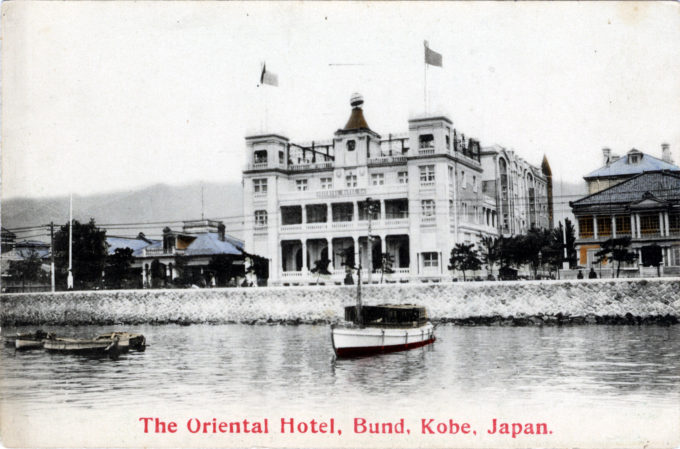
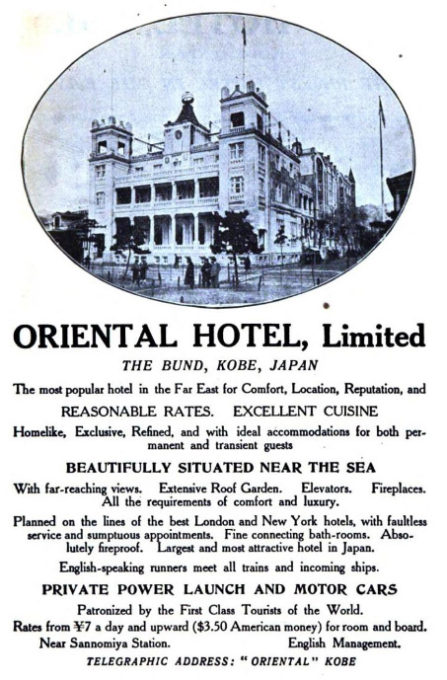
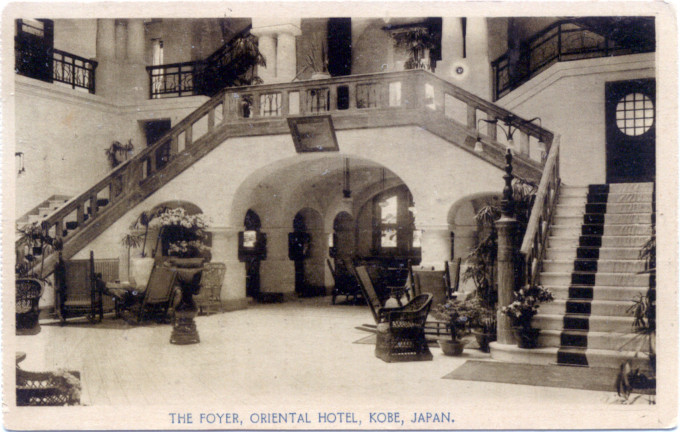
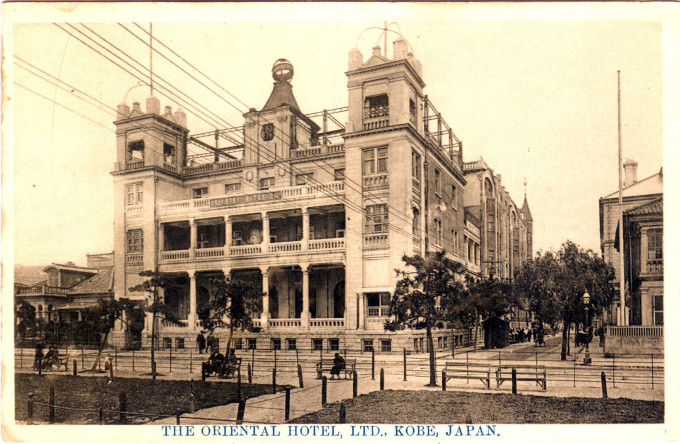
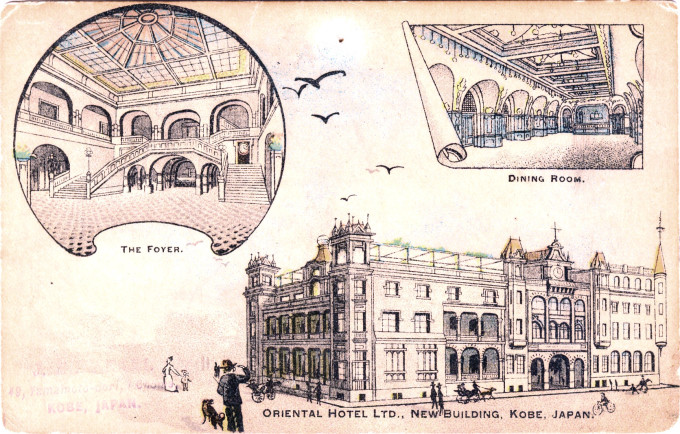

Pingback: Kobe harbor, c. 1910. | Old Tokyo
Pingback: American Hatoba (Wharf), Kobe, c. 1910. | Old Tokyo
Pingback: Tor Hotel, Kobe, c. 1910. | Old Tokyo
Pingback: Kobe Chamber of Commerce & Industry, Kobe, c. 1930. | Old Tokyo
Pingback: Grand Hotel, Yokohama, c. 1910. | Old Tokyo
Pingback: The Bund, Kobe, c. 1910. | Old TokyoOld Tokyo